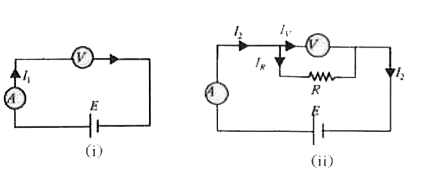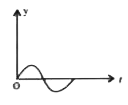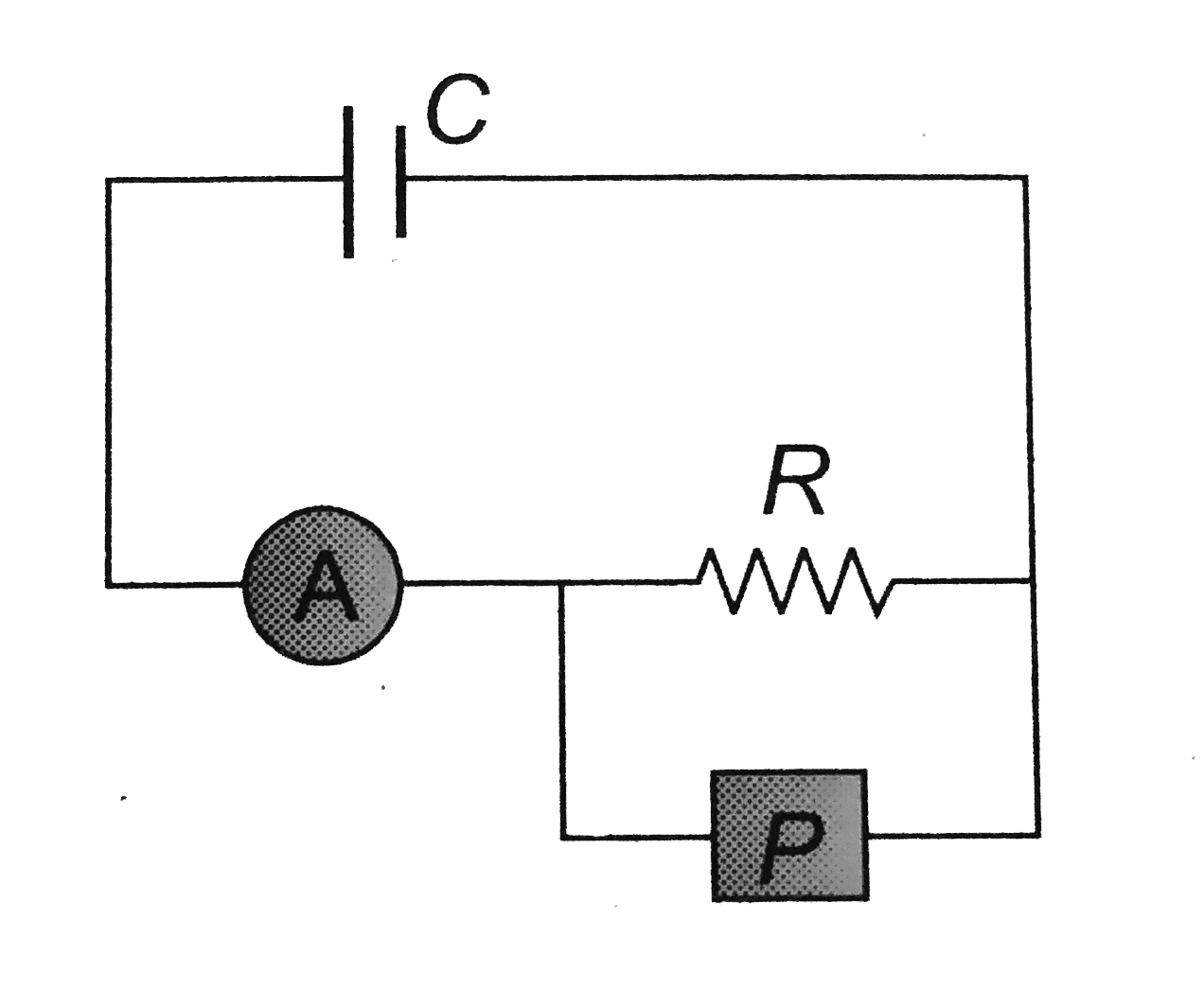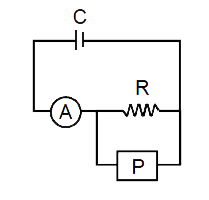An ammeter and a voltmeter are joined in series to a cell. Their readigns are A and V respectively. If a resistance is now joined in parallel with the voltmeter, thenSolution in Kannada
A will decrease, V will increase
A will increase. V will decrease
Both A and V will increase
both A and V will decrease
The correct Answer is:B
Ammeter reading (A) and voltmeter reading (V) depend on the circuit current and current through the voltmeter respectively.

Ist case: Circuit current, I1=ERA+RV
RAandRV are the resistances of the ammeter and voltmeter respectively. the internal resistance (r) of the cell is neglected.
Current through voltmeter.
IV1=I1=ERA+RV . .(i)
2nd case: When a resistance R is connected in parallel with the voltmeter,
circuit current, I2=ERA+RRVR+RV
∵I2>I1, ammeter reading A will increase.
Now, current through voltmeter, IV2=ER+RV⋅I2
or, IV2=RRV+R⋅ERA+RRVR+RV
=RERARV+RRA+RVR=ERARVR+RA+RV . . (iii)
Comparing (i) and (ii), we get
IV2<IV1.
∴ voltmeter reading V will decrease.
Topper's Solved these Questions
Similar Questions
A balloon starts rising from thee ground with an acceleration of 1.25m/s2. After 8 s, a stone is released from the balloon. The stone will (taking g=10ms−2)
05:45View SolutionThe displacement time graph of a particle executing SHM is as shown in the figure. The corresponding force-time graph of the particle is-
 04:46View Solution
04:46View SolutionAn ammeter and a voltmeter are joined in sereis to a cell. Their readings are A and V respectively. If a resistance is now joinding parallel with the voltmeter. Then
04:54View SolutionAn ammeter A of finite resistance, and a resistor R are joined in series to an ideal cell C. A potentiometer P is joined in parallel to R. The ammeter reading is I0 and the potentiometer reading is V0. P is now replaced by a voltmeter of finite resistance. The ammeter reading now is I and the voltmeter reading is V.
 05:45View Solution
05:45View SolutionA voltmeter and an ammeter are joined, in series to an ideal cell, giving reading V and A respectively. If a resistance equal to the resistance of the ammeter is now joined in parallel to the ammeter then :
02:55View SolutionAn ammeter and a voltmeter are joined in sereis to a cell. Their readings are A and V respectively. If a resistance is now joinding parallel with the voltmeter. Then
02:45View SolutionAn ammeter A of finite resistance , and a resistor R are joined in series to an idel cell C.A potentiometer P is joined in parallel to R. The ammeter reading is I0 and the potentiometer reading is V0. P is now replaced by a voltmeter of finite resistance . The ammeter reading now is I and the voltmeter eading is V.
 05:13View Solution
05:13View SolutionAn ammeter and a voltmeter of resistance R are connected in series to an electric cell of negligible internal resistance . Their readings are A and V respectively. If another resistance R is connected in parallel with the voltmeter , then
02:45View SolutionR प्रतिरोध के एक वोल्टमीटर तथा नगण्य प्रतिरोध के अमीटर को एक नगण्य आंतरिक प्रतिरोध के विद्युत सेल के श्रेणीक्रम में संयोजित किया जाता है अमीटर तथा वोल्टमीटर का पाठ्यांक क्रमशः A तथा है V यदि एक R प्रतिरोध वोल्टमीटर के समान्तर क्रम में जोड़ा जाता है तो A तथा V के मानो पर क्या प्रभाव पड़ेगा ?
02:45View SolutionAn ammeter and a voltmeter of resistance R are connected in series to an electric cell of negligible internal resistance . Their readings are A and V respectively. If another resistance R is connected in parallel with the voltmeter , then
View Solutionएक अमीटर व एक वोल्टमीटर एक सेल के साथ श्रेणीक्रम में जोड़े जाते हैं। उनके पाठ्यांक क्रमशः A व V है । प्रतिरोध, वोल्टमीटर के साथ समान्तर क्रम में जोड़ा जाता है:
View SolutionAn ammeter A of finite resistance, and a resistor R are joined in series to an ideal cell C. A potentiometer P is joined in parallel to R. The ammeter reading is I0 and the potentiometer reading is V0 . P is now replaced by a voltmeter of finite resistance. The ammeter reading now is I and the voltmeter reading is V.
 05:52View Solution
05:52View SolutionAn ammeter and a voltmeter of resistance R are connected in series to a cell of negligible internal resistance. Their readings are A and V respectively. If an other resistance R is connected in parallel with the voltmeter
03:59View SolutionAn ammeter and a voltmeter are j oined in series to a cell. Their readings are A and V respectively. If a resistance is now joined in parallel with the voltmeter
02:47View SolutionAn ammeter and a voltmeter are joined in series to a cell. Their readings are A and V respectively. If a resistance is now joining parallel with the voltmeter. Then
01:56View Solution

